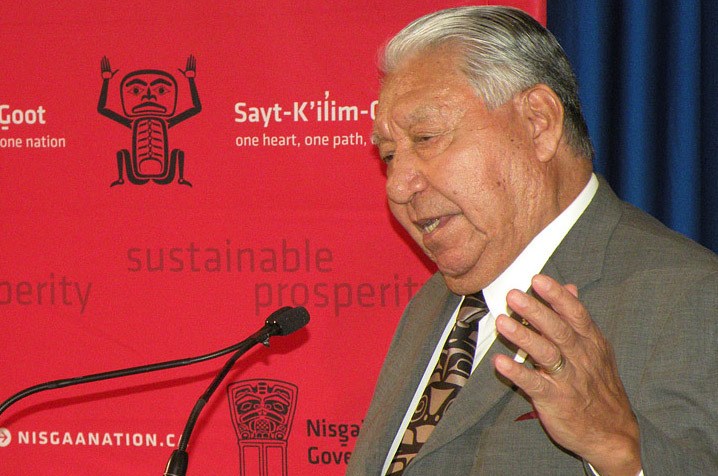VICTORIA – It has been 15 years since I wrote a commentary objecting to the B.C. government pushing aside its own hard-won treaty process to reach an unprecedented land-and-cash settlement with the Nisga’a Nation for their ancient Nass River territory.

My objection, and that of many others, was the imposition of a parallel state with collectively owned land enshrined for all time. This was an ailing NDP government rushing to enable a property ownership system that has demonstrated little but failure and suffering around the world.
The Nisga’a are proving me wrong, and this was again demonstrated at a little-noticed ceremony at the B.C. legislature last week.
The B.C. government had just passed amendments to allow a gas pipeline through Nisga’a Memorial Lava Bed Park, the first co-managed provincial park in B.C. history. Another bill enabled the Nisga’a Lisims government to impose industrial property tax on liquefied natural gas production. Legal documents were signed so the Nisga’a legislature can do the same this week.
In recent years, the Nisga’a disposed of concern about collective land restrictions by adopting a private property system. And Supreme Court of Canada decisions have repeatedly answered protests about the establishment of a parallel state – that’s what it is, so get used to it.
The Nisga’a have moved to assemble four fee-simple tidewater sites for LNG terminals, joining the Haisla Nation at Kitimat in reaching aggressively for a modern economy through gas export. The Nisga’a have partnered with TransCanada Corp. on a 900-km pipeline to supply the $11-billion LNG project led by Petronas for the Prince Rupert port. And they don’t intend to stop there.
“We want to be part of the Canadian business establishment,” said former Nisga’a Nation president Joe Gosnell.
The signing ceremony was briefly disrupted by one of a small group of Vancouver-based Nisga’a who have been using modern protest tactics against this decision. We weren’t consulted, it’s a desecration of victims of a volcanic eruption, it’s a threat to eelgrass beds, and so forth, say well-rehearsed young men with video cameras running.
Nisga’a President Mitchell Stevens has patiently and repeatedly explained that Nisga’a legislature rules were relaxed to allow every hereditary chief to speak to elected leaders on this pivotal move. After that it received the required two-thirds majority support.
Gosnell, the revered chief negotiator who carried the treaty over the goal line in 2000, moved slowly with the help of an ornately carved cane to speak at a reception. He seemed genuinely surprised that he has lived long enough to see the fruits of generations of labour.
Gosnell recounted the 1887 paddling trip down the B.C. coast from the Nass Valley to Victoria to present the Nisga’a territorial claim, where the tribal leaders were turned away on the steps of the legislature by Premier William Smithe. It would take until 1910 for Prime Minister Wilfrid Laurier to promise a settlement, and until 1949 for Nisga’a Chief Frank Calder to be elected to the B.C. legislature.
In 2000, when the treaty received royal assent in Ottawa, Gosnell took part in a ceremonial burning of the Indian Act and got to work on implementing self-government.
And on Nov. 27, 2014, B.C. Liberal, NDP and independent MLAs voted unanimously to open the way to an industrial future for the Nisga’a.
“That’s what being alive means to me today,” Gosnell said. “You’ve got to have big dreams. Maybe all those dreams won’t come true, but at least you have the ability to dream big. And boy, are we ever dreaming big.”
Tom Fletcher is legislature reporter and columnist for Black Press. Twitter: @tomfletcherbc
